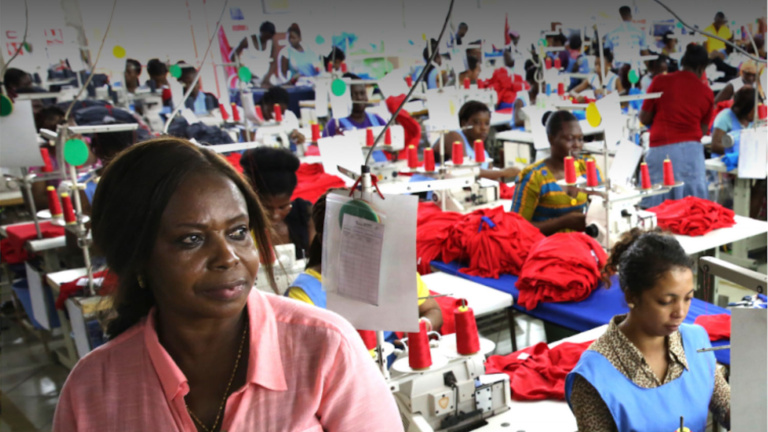
MDB Private Finance Operations: Lenders or Mobilisers?
Much is expected of the multilateral development banks (MDBs) as the international community confronts the daunting challenge of financing the Sustainable Development Goals (SDGs). The MDBs, especially their private sector windows (PSWs), are rightly regarded as essential actors in the challenge of moving from billions to the trillions of dollars of private finance necessary to fill yawning SDG finance gaps.
The nature of the challenge
These institutions—the original impact investors—have an array of tools needed to address the many obstacles that block the flow of private finance for development. They are also good investments for their shareholders, as they are broadly sustainable, and they multiply and leverage the capital contributions of member countries.
Yet we observe a marked disconnect between these aspirations and actual outcomes for mobilisation of private finance by PSWs. A report just released by the Blended Finance Taskforce on “Better Finance Better World” puts 2016 mobilisation ratios for MDB PSWs at 1:1.5 for total mobilisation: that is, for every US$1 of PSW resources, US$1.5 of private finance is mobilized. The total magnitude of annual private financing mobilised by MDB PSWs, at about US$60 billion, falls far short of a meaningful contribution to addressing annual SDG financing gaps in the trillions.
Current mobilisation ratios reflect PSW business models and internal incentives that favour profitable investments for their own account. PSW shareholders expect market returns, maintenance of AAA institutional ratings, significant profits, and avoidance of distortive subsidies. This set of objectives understandably constrains the risk tolerance of PSWs.
For better mobilisation, PSWs should be provided scope to take more risk, increase their operations in difficult countries and sectors, and target key gaps in capital markets that block the flow of private finance.
Two pervasive gaps play a central role in impeding the mobilisation of private finance in developing countries. Enhancing the ability of PSWs to fill these gaps would do much for strengthening both their mobilisation and development impact.
1. The scarcity of investors willing to take on the riskiest project tranches, such as first loss or junior equity;
2. Very limited early stage finance—for early stage firms, early stages of local capital market development, and pre-operational greenfield infrastructure projects.
A proposal for capitalizing special vehicles within PSWs
A solution for addressing these gaps, while maintaining the AAA rating and profitability of core PSW balance sheets, is to add special purpose vehicles (SPVs) with separate balance sheets to PSWs—purpose built for taking on additional risk. These SPVs would not be expected to achieve market returns. In fact, their financial goal could be defined simply as preservation of shareholder equity in real terms at the entity level.
They would focus on the two capital market gaps identified above. The first—increasing the amount of finance for high-risk tranches of projects—would likely deliver an early boost to mobilisation ratios, especially in middle income countries. The second—more early-stage finance—should increase mobilisation ratios over time by building stronger bankable project pipelines. The SPV toolkit would be comprised principally of equity, quasi-equity, first loss guarantees, junior debt, outcomes payments, and grants. Grants would help address pipeline problems through support for project preparation, product or business model innovation, and seeding startups. Outcomes payments would incentivise private investment with high development impact by increasing or securing returns.
The basic idea is for the two parts of the PSW—the SPV and core operations—to offer a seamless continuum of products and services to clients. In some cases, this would make deals bankable that otherwise would not pass credit committees. In others, it would make scale and much larger deals possible. And in still others, it would mean a smooth handoff from the SPV to the core PSW operations when clients or markets are ready for commercial finance and growth. A critical additional success factor would be the extent to which the two parts of the PSW would be able to rely on support from the MDB sovereign lending side—for promoting well-targeted policy and institutional reforms to make projects financially viable and for helping to finance the public share of public-private partnerships (PPPs).
Capitalising such SPVs offers certain attractive features to MDB/PSW shareholders. The amounts of capital needed would be relatively small, as the amount of finance needed for risky tranches and for early stage capital is small relative to senior and growth capital needs. Moreover, because they would be new entities, the SPV shareholder structure and governance arrangements could be established de novo, avoiding concerns about dilution from countries which do not wish to participate.
Project vs. portfolio risk sharing
Project origination would still largely be done by the core PSWs. It would be desirable, however, to include within the SPV a small team operating as channel for innovative business models, technologies, and financing structures. In cases where market testing and adaptation is needed to establish commercial potential, these projects could be piloted by the SPV for later scaling in collaboration with the core PSW. This internal laboratory would be important to secure a steady flow of new ideas, strengthen openness to innovation, and push out the PSW risk tolerance frontier.
Another possibility is to take a portfolio, rather than project-by-project, approach to collaboration between the core PSW and the SPV. The SPV could take on a defined high-risk tranche of the portfolio or could guarantee part of the portfolio. This would have the advantage of simplicity and of stretching core PSW capital. But it would not necessarily change staff behaviour, risk tolerance, and therefore mobilisation at the project level.
How does this proposal differ from existing special purpose vehicles?
PSWs currently raise bespoke risk-sharing funds from individual donors, which are often limited with respect to sectors and financial instruments. An important exception is the new $2.5 billion IDA Private Sector Window which is an IFC-managed SPV with broad-based donor support and flexibility regarding both sectors and blended finance tools. But this proposal would not be restricted to operations in the poorest (IDA) countries and has some important financial and governance advantages.
1. It would address critical capital market gaps and take on more risk in middle income countries (MICs) as well as in low income countries (LICs). Even with improved capital market access, MICs continue to face major challenges in mobilising private finance for sectors that are risky but critical for growth.
2. Retaining a focus on MICs as well as LICs would support a substantial improvement in mobilisation ratios and would help manage risk through diversification.
3. The resources funding the SPV would take the form of shareholder capital rather than one-time donor contributions. This financing model would establish a basis for periodic assessments of SPV capital adequacy and possible capital increases, as in the case of PSW core capital.
4. A SPV capitalisation of this nature in the IFC case would reduce future diversion of scarce IDA replenishment resources from massive public investment needs to fund private investment.
5. Under this proposal, shareholders would have the chance to create a new, fit-for-purpose governance mechanism to assess SPV performance at the portfolio level against agreed criteria for risk tolerance, returns, and development impact.
6. And finally, shareholders would be deploying their new capital in a way that incentivises and facilitates the institutional change they seek–more openness to innovation and a greater focus on mobilisation and areas and projects with greater development impact.
Two additional SPV variants worth exploring
One SPV for all. A question of practical significance is whether it is necessary or desirable to contemplate creation of an SPV in each of the MDBs. The heavy lift of creating a new entity at each institution with its own governance structure, as well as the combined multi-institution capitalisation demands and negotiations, would burden both shareholders and MDB managers. Creating one SPV that all MDBs could access would avoid this complexity. It would also facilitate collaboration across the MDB PSWs with the SPV as a common focal point. MDB PSWs could be incentivised to collaborate in order to access valuable SPV risk sharing resources. At the same time, the SPV could generate healthy competition among the MDBs because the SPV management and board would have the opportunity to compare project proposals from a number of MDBs and select the best. In addition, the SPV could develop a diversified global portfolio which would help in managing risk.
A public-private SPV. Another option with distinct advantages is an entity capitalised with both public and private capital. This would reverse the usual PSW approach to crowding in private finance—which tends to reserve the lower risk tranches for private investors. Risk tolerant impact investors and philanthropists would instead be given a chance to participate in the riskier tranches where mobilisation ratios and development impact are the highest. As a result, public shareholders would not have to bear the whole burden of capitalising the SPV and would likely benefit from innovations and efficiency gains introduced by private impact investors. For their part, private investors would benefit from MDB pipelines, institutional standards, knowledge, presence on the ground, and the opportunity for greater scale. This structure would give private sector actors, as shareholders, a seat at the governance table—not such a radical idea in a world where public-private partnerships are increasingly regarded as central to development progress.
About the author
Dr Nancy Lee is currently a Visiting Fellow at the Center for Global Development, previously deputy CEO of the Millennium Challenge Corporation, CEO of the Multilateral Investment Fund at the Inter-American Development Bank, and deputy assistant secretary at the U.S. Treasury Department
Read the full magazine issue








